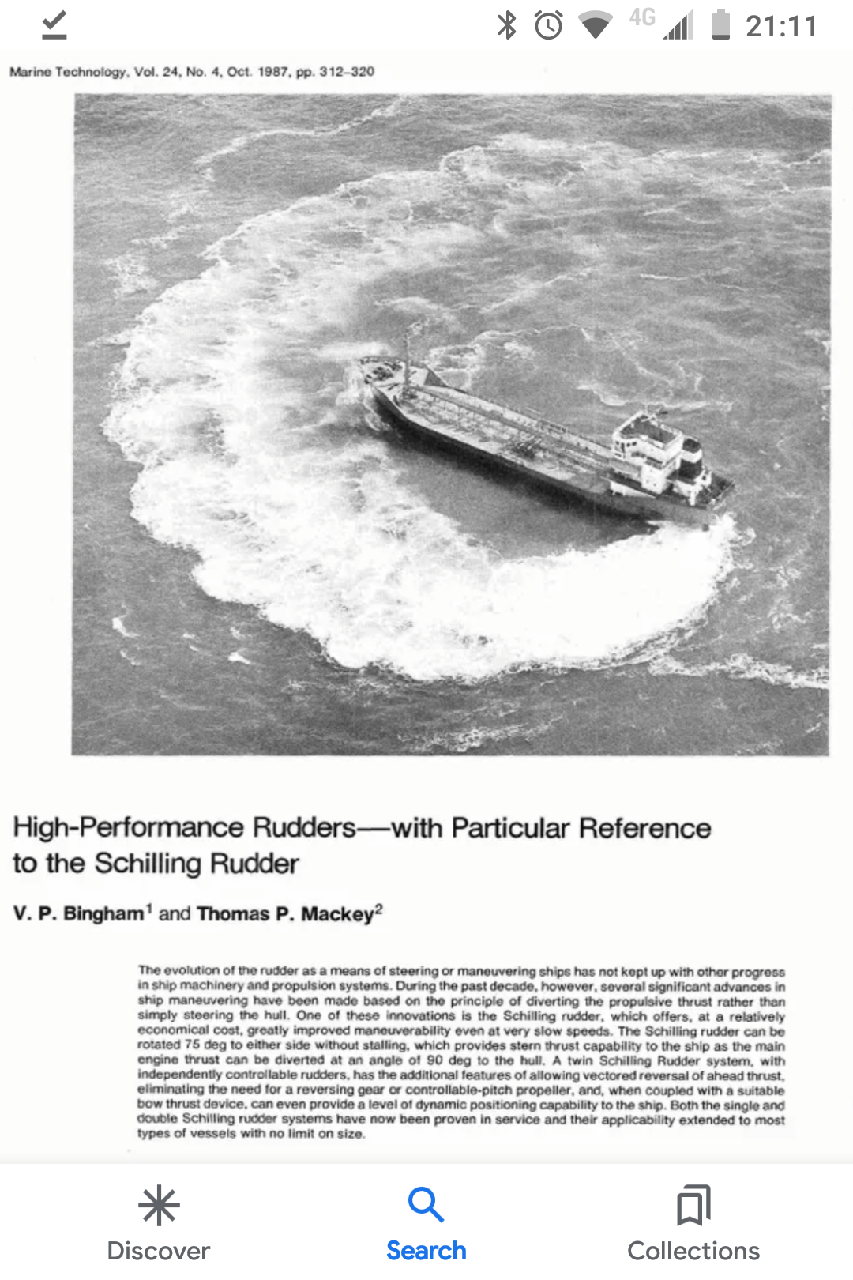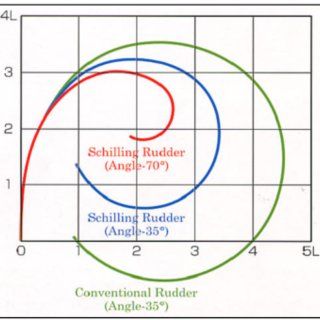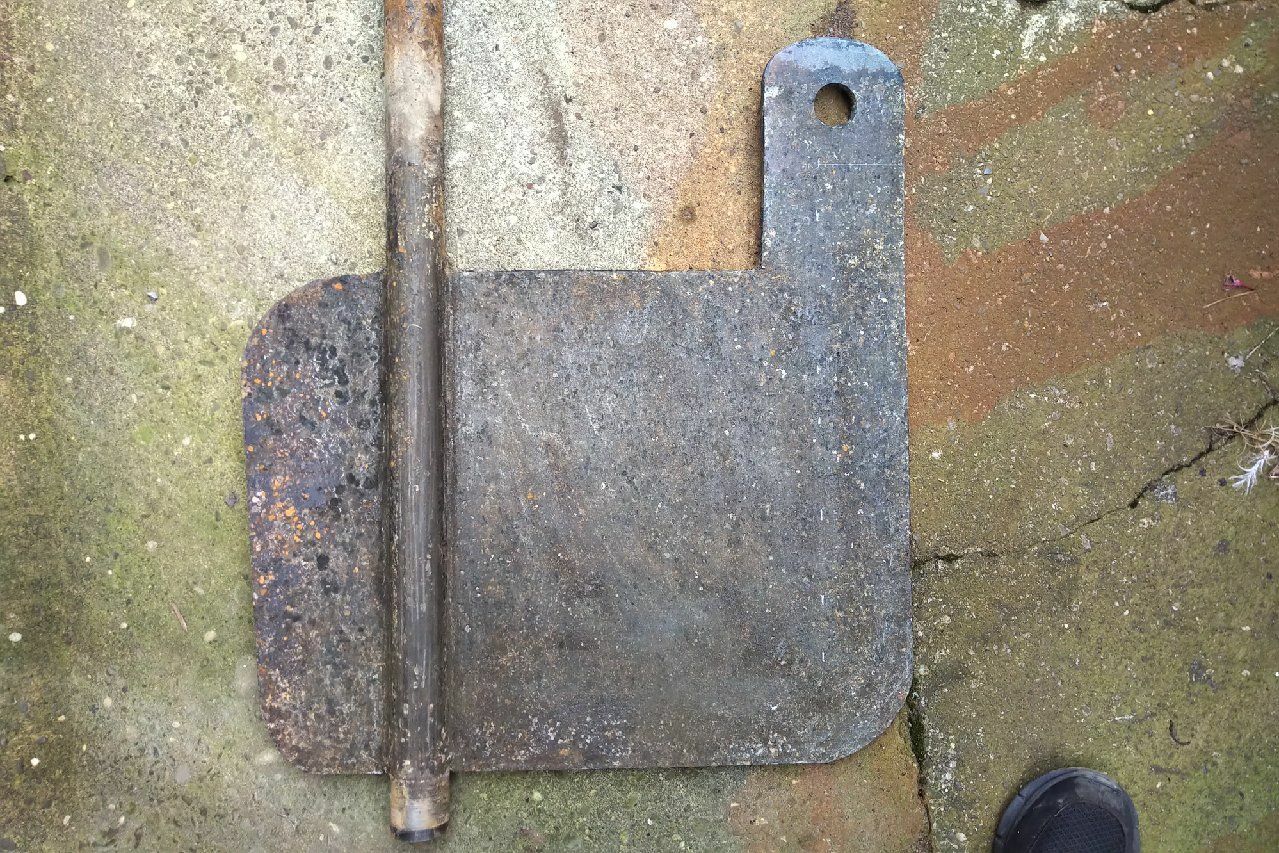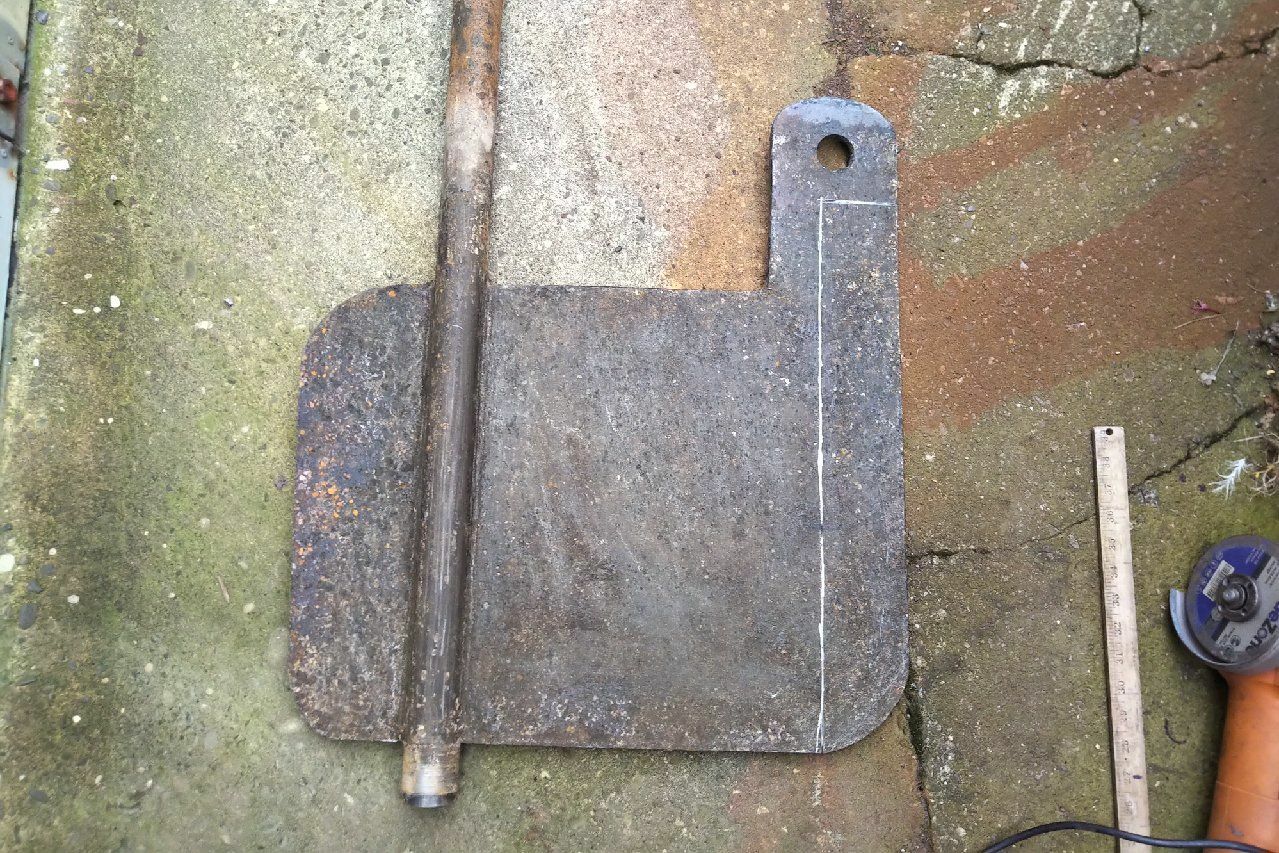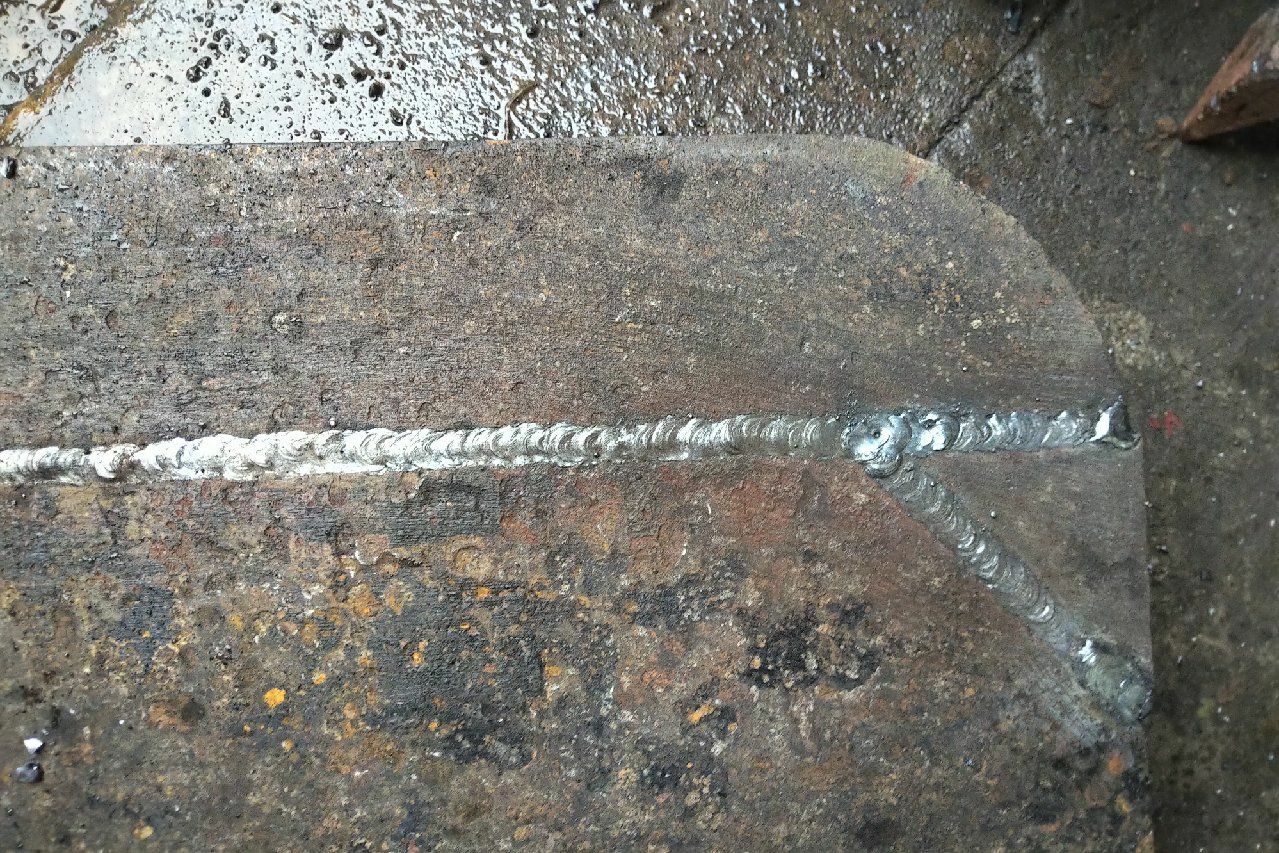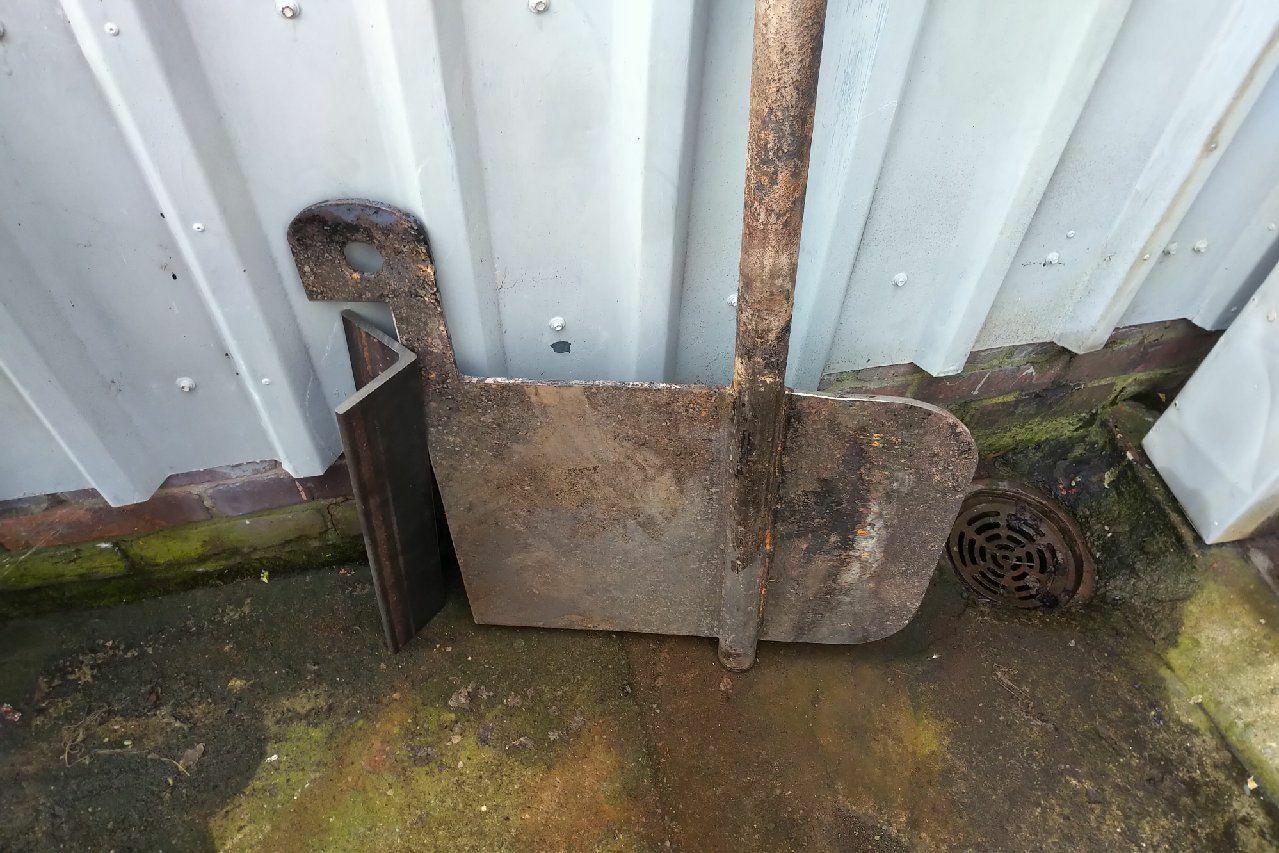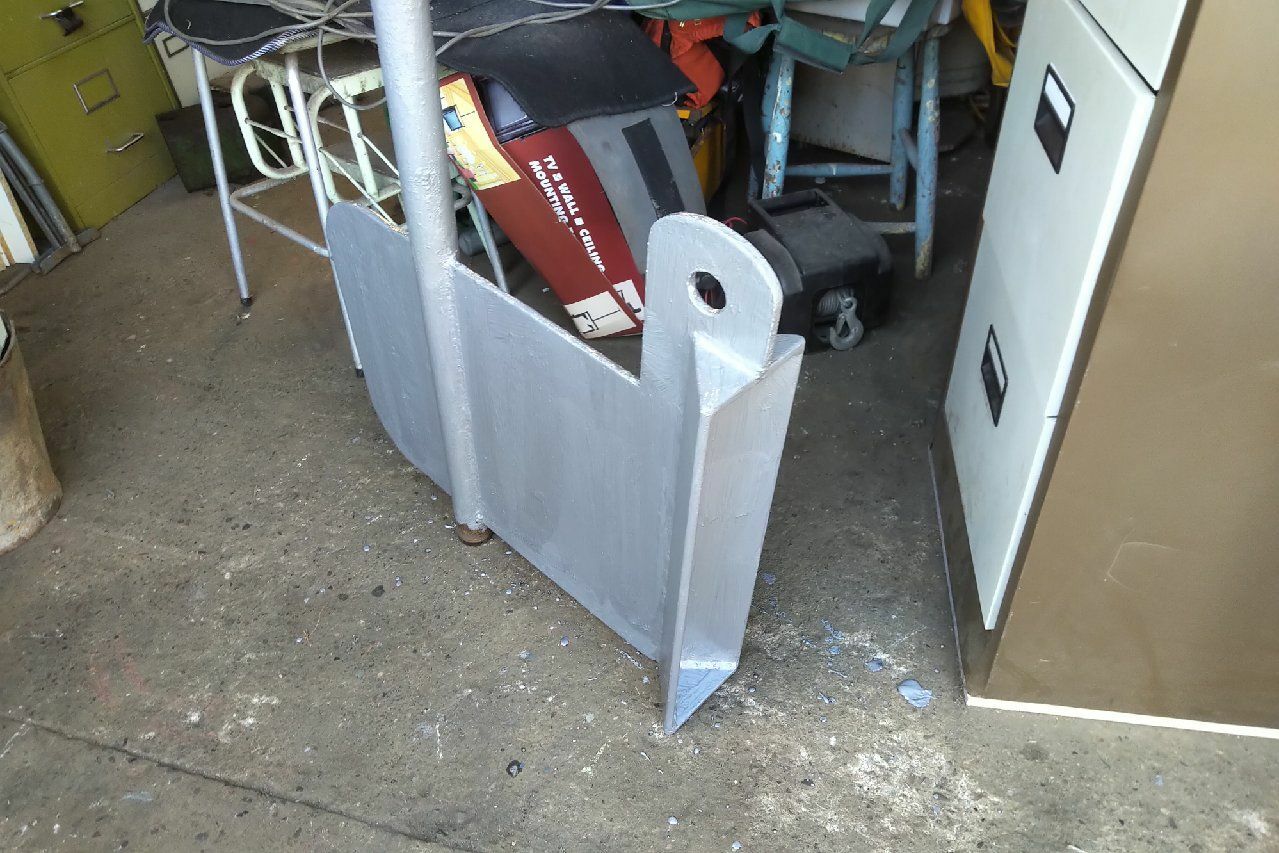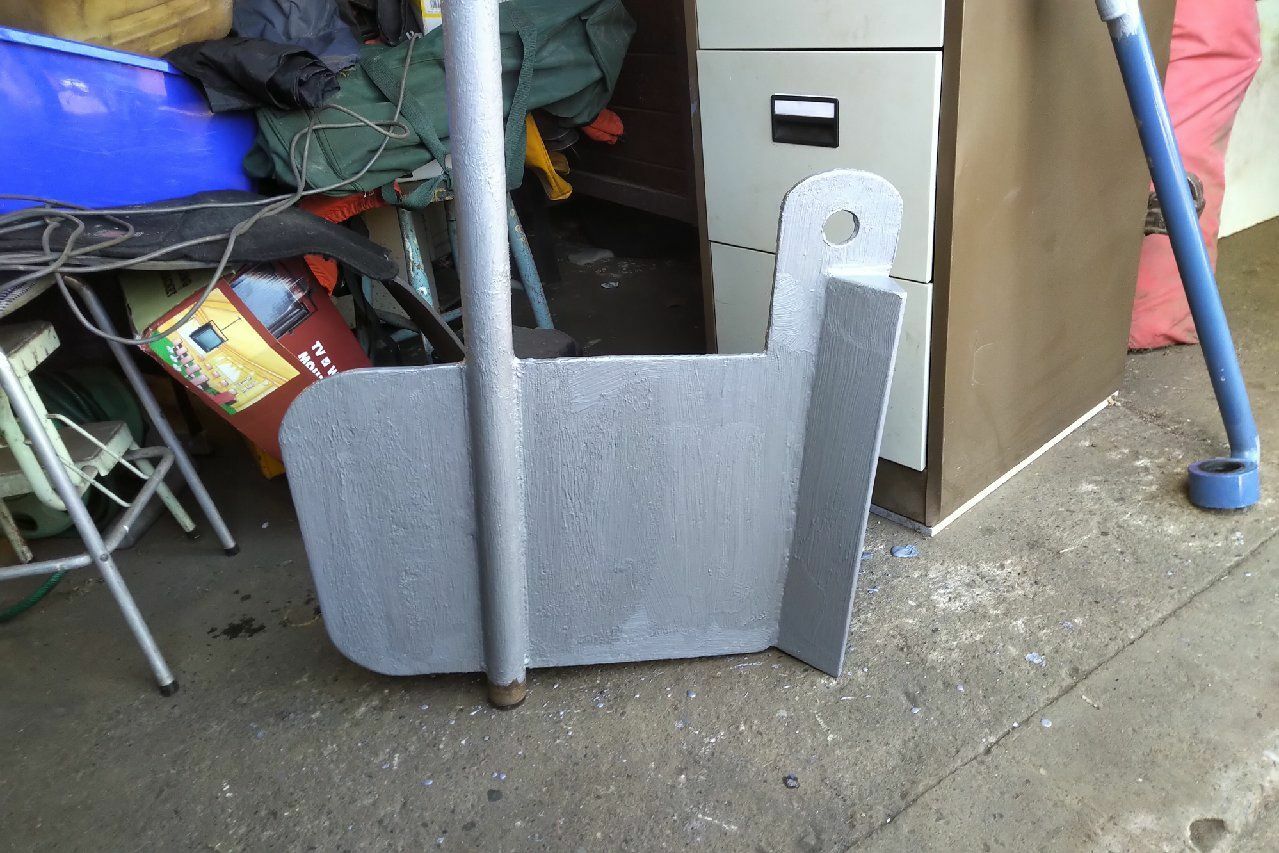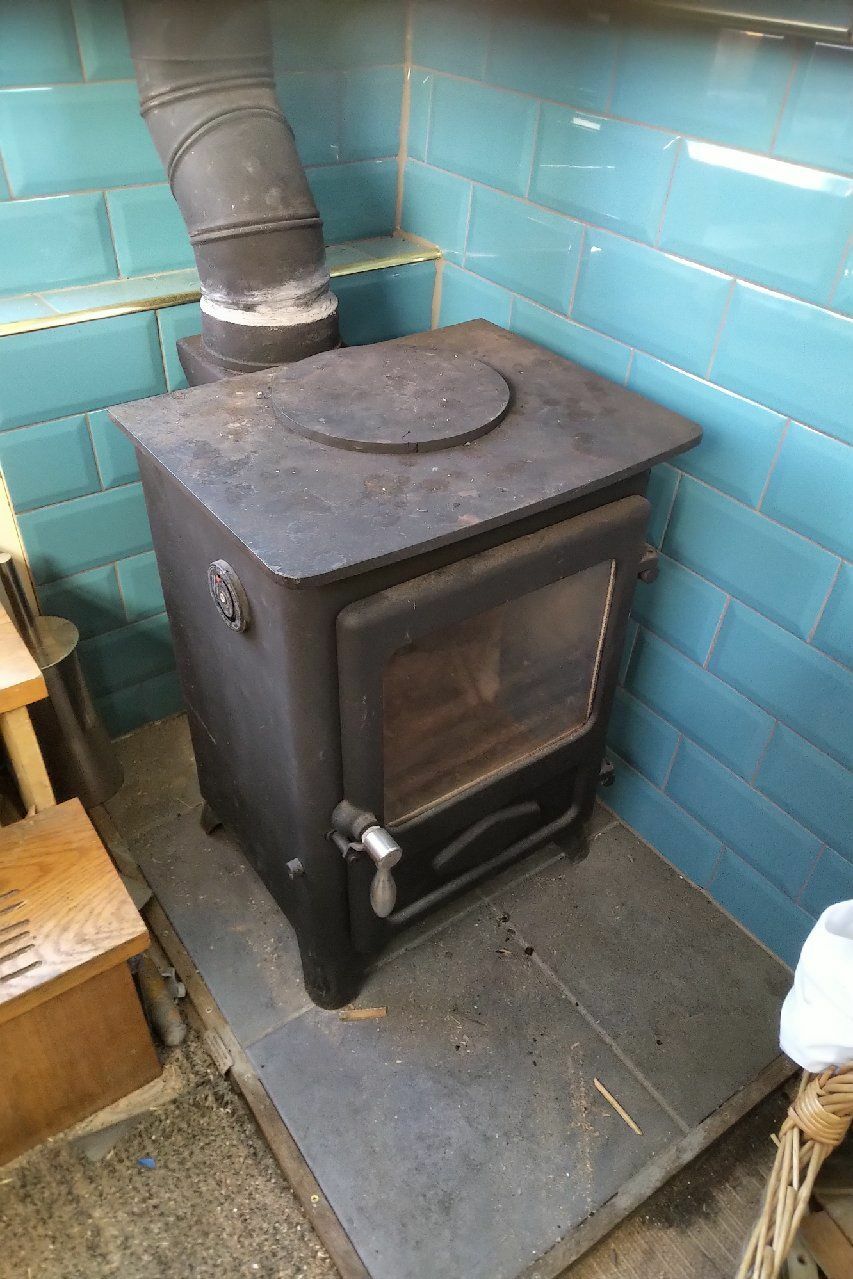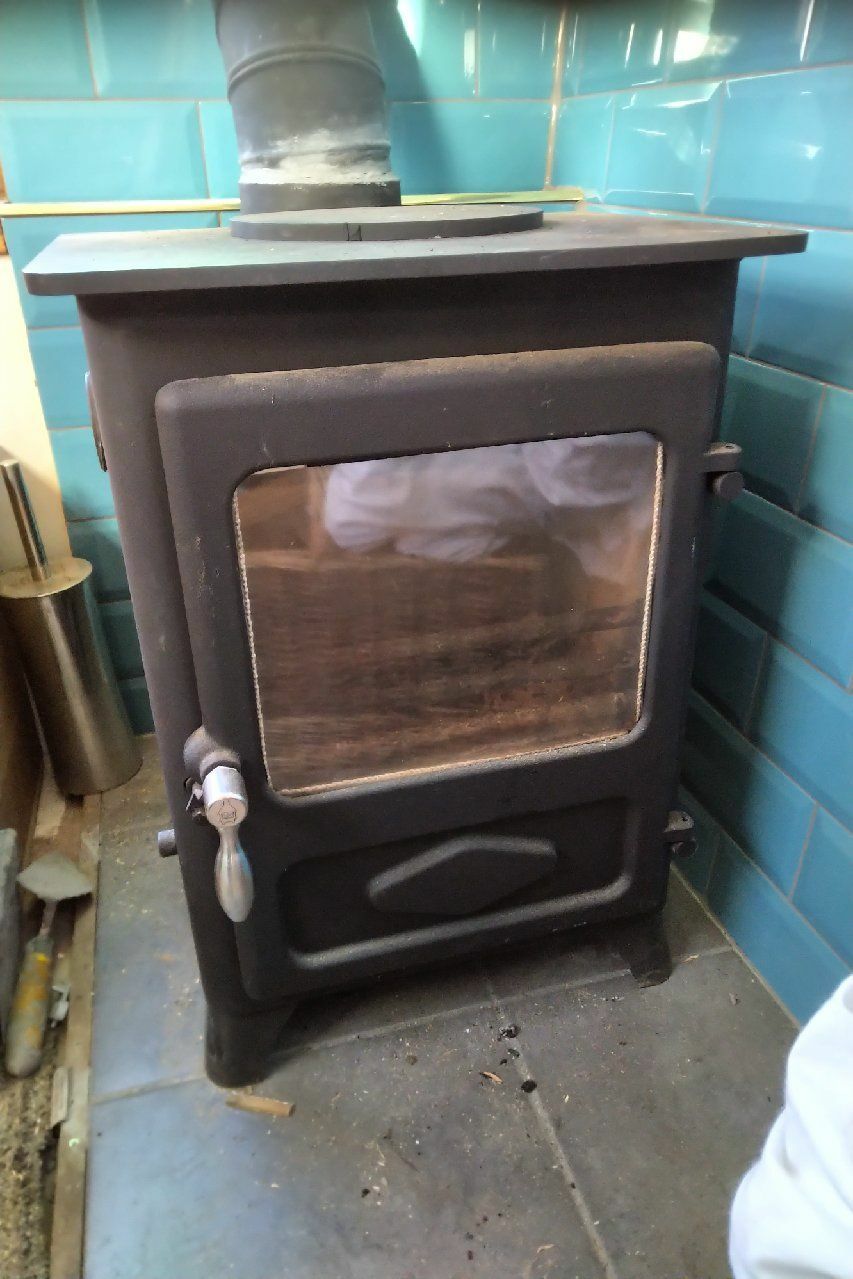

Andy Br
Member-
Posts
33 -
Joined
-
Last visited
Content Type
Profiles
Forums
Events
Gallery
Blogs
Store
Everything posted by Andy Br
-

Schilling rudder project on narrowboat
Andy Br replied to Andy Br's topic in Boat Building & Maintenance
Well I have just returned to my marina and done a tight 180 degree turn in 25 knots of beam wind in one go- something I could never have done without either bow thruster or going astern a few times before I modified my rudder. So I am very happy. Ian D I would be very interested to know how your rudder performs when you get your boat finished- please let me know- I may well go the whole hog and fabricate a proper Schilling. Everybody else can stick to their flat plate rudders! -

Schilling rudder project on narrowboat
Andy Br replied to Andy Br's topic in Boat Building & Maintenance
The diagram above is a full speed ahead turning circle, not an indication of manouvring ability, i.e. the ship was doing probably 15 knots ahead before the turn. Look at the photo of the ship above you can clearly see the wash coming out approx 90 degrees to the ship. You can also read the text below, that was a scientific paper by a couple of Naval architects. If you are interest in knowing more, there is plenty on the internet. -

Schilling rudder project on narrowboat
Andy Br replied to Andy Br's topic in Boat Building & Maintenance
There is no point discussing what a certain diagram shows or does not, Schilling rudders are proven technology and they do work very well. They can deflect the thrust 90 degrees to the propeller and yes I have experienced a couple of ships that have started creeping astern with hard over rudder and slow ahead engine. We also work with a minimum of 10% of the ships draught underkeel clearance- i.e. equivalent to the average narrowboat having 7.5 cm underneath. Therefore most marinas are not restricted water and there is no reason why a Schilling rudder should not work on the canal. (My own 'Heath Robinson' attempt definitely does). The original point of my post was to see if anybody had any actual experience of them on a narrowboat. This diagram is just simply the turning circles of a ship in relation to the ships length. (L) -

Schilling rudder project on narrowboat
Andy Br replied to Andy Br's topic in Boat Building & Maintenance
Absolutely spot on. Plus builders have a load of bottom plate offcuts to use up on something.... My rudder that cost me a couple of angle grinder blades and a score of welding rods is a vast improvement so hopefully will encourage a few more to have a play. -

Schilling rudder project on narrowboat
Andy Br replied to Andy Br's topic in Boat Building & Maintenance
It's a Reeves so a decent boat, if a little full in the swim. Its trying to match a prop to the hydraulic drive that only runs at 500 rpm. Might have a look in the future although, with my rudder mod, I'm pretty happy with it now. One good thing is with the Axiom it stops so fast in astern. Great with kids and inexperienced wife helmsmen! -

Schilling rudder project on narrowboat
Andy Br replied to Andy Br's topic in Boat Building & Maintenance
Yes you are bang on but not much I can do to the boat design (which is pretty much perfect for us otherwise) and not much I want to do (costwise) in changing propellers and engines. The rudder however I can attack with welder and angle grinder in one day while the kids are at school! I'd love to try a different prop, it's currently an Axiom with hydraulic drive. -

Schilling rudder project on narrowboat
Andy Br replied to Andy Br's topic in Boat Building & Maintenance
That's a lovely looking swim! That is possibly why. -

Schilling rudder project on narrowboat
Andy Br replied to Andy Br's topic in Boat Building & Maintenance
Unfortunately concave angle iron offcuts cannot be found in skips readily 😂. Yep definitely some tweaks I can make. -

Schilling rudder project on narrowboat
Andy Br replied to Andy Br's topic in Boat Building & Maintenance
Yeah I go astern a lot, especially if it's my nearest winding hole. I don't see its made any difference and anyway I cheat and steer with the bowthruster. 😉 Interesting Matty, I will read those other posts tonight thanks. -

Schilling rudder project on narrowboat
Andy Br replied to Andy Br's topic in Boat Building & Maintenance
It really has made a huge difference. Normal rudders (on ships at least) start to stall at angles much over 30 degrees and yet I have seen Schilling rudders go to 70 degrees and act just like stern thrusters. How much part the 'aerofoil' section plays in this I don't know, it certainly smooths the flow. It just needs a few more people to tinker about with their rudders and report back! Im sure the standard narrowboat rudder can be much improved on with a few tweaks. It is very rare that you see modern ships (at least smaller ones designed for coastal use) built without some kind of high lift rudder these days and I notice the continental river barges have gone for at least 2 schilling rudders per propeller. My first experience of a Schilling rudder was watching a 55,000 tonne bulk carrier go perfectly sideways in conjunction with bowthruster. Awesome sight and thought then I would fit one if ever I got a boat. Be interested to hear if anyone else has had a tinker! -

Schilling rudder project on narrowboat
Andy Br replied to Andy Br's topic in Boat Building & Maintenance
That is a lovely looking rudder Ian! Did you have a conventional rudder on the same boat previously to compare with? I wish now I had done some measurements with a strain gauge or something to quantify the lift. I also wish I had added the balance and wedge one by one to see how much effect each has. You are right about the balance for a tiller narrowboat. I will grind a bit off. I have a drawing of a real one on a ship I sailed on and it was about 40 percent balance but as you say 30 percent would probably be better. -
Hello, Just posting this on here if anyone is interested. I tried doing some research and not a lot available RE narrowboats and high lift rudders and none (I could find) with any follow up on performance. Background- I hired a few narrowboats before I bought my own. The hired ones varied in steering response when maneuvering- one in particular was excellent with very little forward movement and maximum turning effect at full helm and dead slow ahead. The others were okay. My own boat was pretty rubbish in comparison. Large angles of helm resulted in mainly forward movement and very little turning moment. I know the shape of the swim can affect handling but there is not much you can do about that once a boat is built! Mine has a fairly full swim. All the boats have a conventional narrowboat flat plate rudder and the only difference I can see is that my own boat is a bit bigger and has an Axiom prop (okay let's not start on that..). Whilst not being experienced in narrowboats I have an extensive experience on sea boats, and a career manoeuvring ships. "High lift" rudders on ships increase the maneuverability immensely. For those who are not aware "high lift" rudders fall into two main categories- ones with a moveable flap that articulate through a mechanical linkage- known as 'flap rudders' (also known as Becker rudders- trade name- others are available- eg Barke, Hinze). The other type is the 'Schilling' type which is a solid rudder with no moving parts and features a trailing fish tail section. They tend to be well balanced with approx 40 percent area forward of the stock. From a pure ship handling point of view they are equally as good (in my humble opinion) so I opted for the 'no moving parts' experiment and armed with my welder and angle grinder decided to try to make a simple Schilling rudder and see if it made any difference. I didn't want to go mad and make something that weighed a ton so I decided to cherry pick the features of the Schilling that (I assumed) would make the most difference and I could quickly and easily replicate. Schilling rudders have an 'aerofoil section' which I decided not to bother with- I would retain the flat plate rudder as much as possible. They also have quite large plates top and bottom to help direct the flow- again I didn't want to add too much weight to something I was going to have to lift back on with a wetsuit! So I decided that increasing the area of the rudder forward of the stock to balance it as much as possible and adding a trailing wedge was going to be my limit. I will attach photos of my simple mod which was simply grinding 3 inches off the back of the rudder and welding it on the front and replacing the 3 inches missing from the back with a piece of 4 inch angle iron. I had previously checked that there was loads of distance between the prop and the rudder. The improvement in manoeuvring is absolutely immense and handles far better than any of the hired narrowboats. Hard over and dead slow ahead there is no forward movement, only turning moment- possibly even a tiny bit of sternway. Normal running on the canal is not adversely affected in any way, no vibration. The only thing is with the extra balance the steering is very light and won't automatically centre if I let go of the tiller. When I lift her out for blacking I may grind half an inch off the balance to try to improve on that. just thought it might be of interest to someone. Cheers, Andy
-
I'm no expert on them but I think there is a temperature sensor on the return pipe and the heater goes to low power when that water is above a certain temperature, i.e. all the heating system hot enough. A smaller heater working hard to maintain the radiators temperature has a better life expectancy than a larger heater keep cycling low and high. That is my understanding anyway. Of course I have a mark 1 wood burner as well...
-
I have just swapped my Eberspacher 5kw for a 4kw Webasto. The 5kw was too big and cycling on and off. There is not a noticeable difference in heat output but the Webasto is sooooo much quieter!
-
Hmmm thanks for that. I will email some dealers and see what they say.
-
Hi, thanks for your reply, yes I bought a sealed marine exhaust/silencer. The car one will be on eBay soon! I also wondered about the voltages but the book says 10-16 volts- possibly that's a generic figure and mine will be programmed to cut out sooner. Sounds like I need to parcel it up and find a dealer! cheers, Andy
-
Hello, Does anybody know if it's possible to adjust the software settings of a Webasto? I have just finished installing a new Webasto Thermo Top Evo 4 (4kw) in my boat connected to 3 radiators and calorifier. It is a direct replacement for an old noisy Eberspacher d5w (5kw). It became apparent that the Eber was too big for the install, constantly cycling on and off. I have fired up the Webasto and it works great and it's so much quieter. However I have now realised that, having bought an automotive version, it is timed to cut off after 1 hour. It also seems that the water output is not as hot as the old Eberspacher. I was told by a dealer that the output difference of a 4 and 5kw heater would be barely noticeable. Just wondering if it is possible to adjust the settings to make it into a "Marine" version, either by myself or by a dealer. I have a computer interface and software on order. Thanks!
-
That's the one, many thanks Philjw, Mystery solved!
-
Thanks, there are two damper controls on the bulkhead side, out of view. Had it going a few times while I have been working and it burns lovely. I will probably change the flue for double skin for safety.
-
Does anybody know what make/model of stove this is please? I can't find any makers plate or writing on it anywhere. Thanks!
-
Hi All, Just to let you know that I am taking the opportunity to replace the Vetus 110 litre tank with a 250 litre tank. I ordered from direct water tanks, it took less than a week to arrive and looks perfect. It's very heavy plastic and I ordered undrilled so I can fit the Vetus fittings from the old tank. It is also quite squat so will fit under the bunk well. https://www.directwatertanks.co.uk/250-litres-baffled-water-tank-flat Cheers for your replies. Andy
- 17 replies
-
Very useful that thanks!
- 17 replies
-
Thanks for your info all, very useful. I think I will look at increasing the size to at least 200 litres.
- 17 replies
-
Hello all, Just sorting out a narrowboat prior to use. Part of that includes re-modelling a bed which. houses the pump out tank. It is a 110 litre tank. This seems a bit small to me and there is plenty of space, not far off the centre line, to increase the size. just wondering how long other people's tanks fill with normal use. We are a family of four and will be using it for long weekends, possibly up to a week at a time. I know it's a 'how long is a piece of string' question but comments appreciated. Thanks, Andy
- 17 replies
-
A hundred quid!! ? I think I will go with the normal radiators! Thanks for that.
- 11 replies
-
- heating
- eberspacher
-
(and 1 more)
Tagged with:


